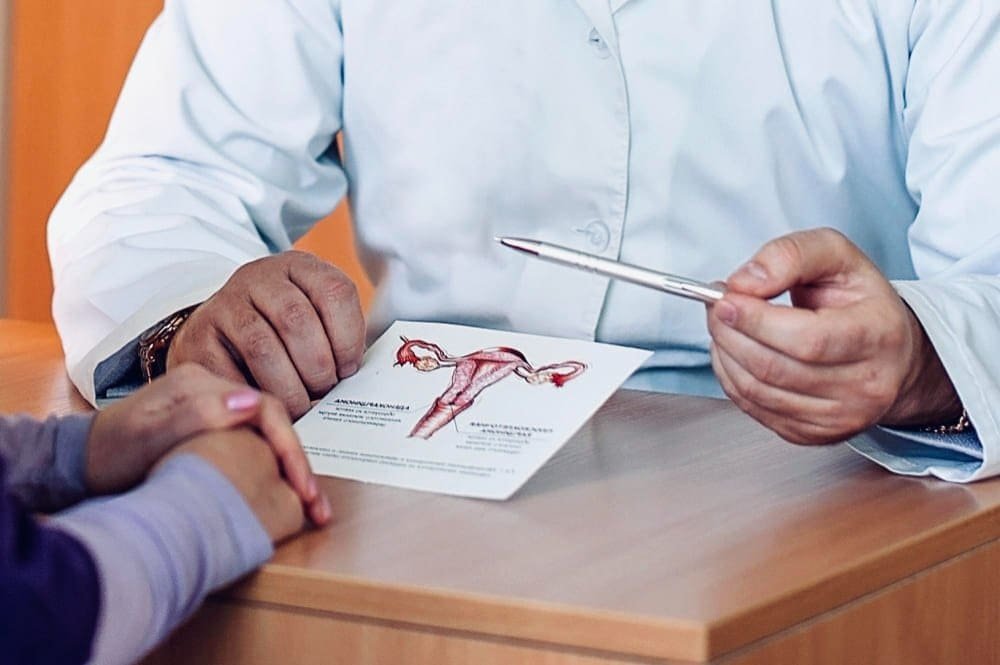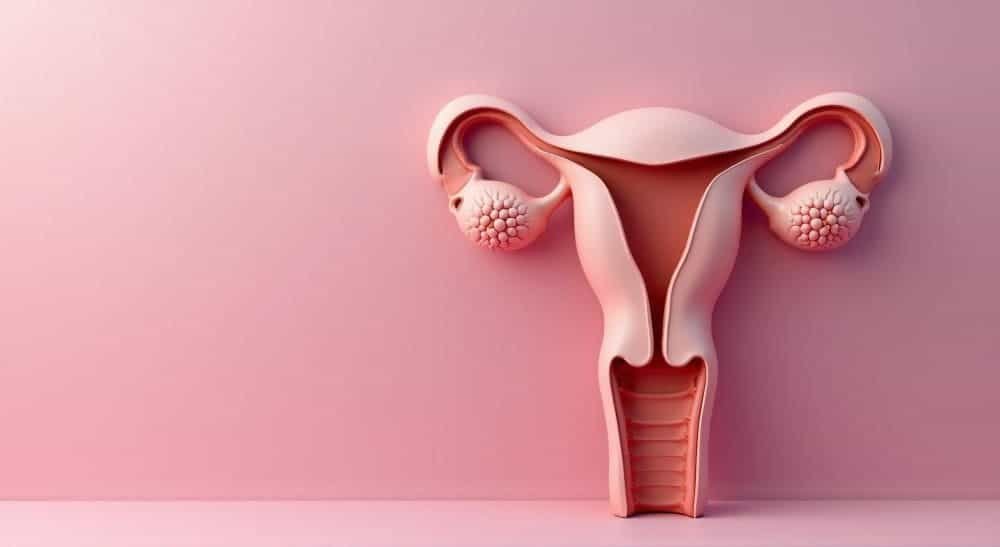Hysterectomy—the surgical removal of the uterus—can bring relief from severe symptoms, but it can also lead to physical, hormonal, and emotional side effects. Here’s what every woman should know before making this life-changing decision.

Understanding Hysterectomy and Why It’s Performed
A hysterectomy is a major surgical procedure that removes the uterus, and sometimes the cervix, ovaries, and fallopian tubes. Doctors perform it for various health conditions, including:
- Uterine fibroids are causing heavy bleeding and pelvic pain
- Gynecological cancers (uterine, ovarian, or cervical)
- Adenomyosis or endometriosis
- Uterine prolapse
- Chronic pelvic pain or abnormal bleeding not controlled by other treatments
While hysterectomy can be effective, especially for cancer, it is often recommended for fibroids even when safer, less invasive options like uterine artery embolization (UAE) exist.
Types of Hysterectomy
- Total hysterectomy – removal of the uterus and cervix
- Subtotal (partial) hysterectomy – removal of the uterus but not the cervix
- Radical hysterectomy – removal of the uterus, cervix, part of the vagina, and nearby tissues
- Laparoscopic hysterectomy – minimally invasive with small incisions
- Vaginal hysterectomy – uterus removed through the vagina
Hysterectomy Side Effects: An Overview
Side effects after hysterectomy can be short-term, lasting for weeks after surgery, or long-term, appearing months or years later. The severity depends on the type of hysterectomy, whether the ovaries are removed, the woman’s age, and her overall health.
Short-Term Hysterectomy Side Effects
These occur soon after the procedure and may last days to weeks.
1. Vaginal Bleeding and Discharge
It’s common to have vaginal bleeding or spotting for several weeks after surgery. This is part of the healing process. Discharge may be pink, brown, or yellowish.
2. Pain and Swelling
- Abdominal pain from the incision
- Pelvic pain due to internal healing
- Bloating and abdominal swelling
Pain is usually managed with medications, but it can still affect mobility and sleep.
3. Blood Loss
Significant blood loss during surgery may require a transfusion. This is more likely in abdominal hysterectomy than in vaginal or laparoscopic approaches.
4. Urinary and Bowel Changes
Some women experience constipation, temporary urinary incontinence, or difficulty emptying the bladder. This is due to the proximity of the pelvic structures and temporary nerve irritation.
5. Surgical Complications
Short-term risks include:
- Blood clots in the legs or lungs
- Infection at the incision site or inside the pelvis
- Damage to nearby organs like the bladder, ureter, or bowel
6. Menopause-Like Symptoms
If the ovaries are removed (oophorectomy), women may experience menopause-like symptoms immediately:
- Hot flashes 🔥
- Night sweats
- Vaginal dryness
- Mood swings
- Sleep disturbances
Long-Term Hysterectomy Side Effects

Months or years after surgery, women may notice changes in their body, mood, or overall health.
1. Hormonal Changes
Removing the ovaries causes an abrupt drop in estrogen and progesterone, leading to:
- Reduced bone density (osteoporosis risk)
- Increased risk of heart disease
- Skin and hair changes
2. Sexual Side Effects
Some women report:
- Vaginal dryness
- Decreased sexual drive
- Pain during sex
- Changes in orgasm sensation
3. Pelvic Floor and Bladder Issues
Without the uterus for support, some women develop pelvic organ prolapse, urinary incontinence, and increased bladder pressure.
4. Digestive and Bowel Changes
Adhesions (scar tissue) can form inside the abdomen, sometimes causing chronic pelvic pain or changes in bowel habits.
5. Emotional and Cognitive Effects
Hysterectomy can affect mental health:
- Depression or anxiety
- Mood swings
- Brain fog
- Feelings of loss over fertility
6. Weight Gain and Physical Changes
Some women report gradual weight gain, bloating, or a change in body shape after surgery. Hormonal shifts and reduced activity during recovery may contribute.
7. Life Expectancy Considerations
While hysterectomy itself doesn’t necessarily reduce lifespan, removing the ovaries before natural menopause can impact life expectancy due to increased cardiovascular and bone health risks.
Most Common Side Effects of a Hysterectomy
- Pain and swelling in the abdomen and pelvis
- Vaginal bleeding or discharge
- Hot flashes and other menopausal symptoms
- Urinary or bowel changes
- Fatigue and mood changes
- Changes in sexual function
Fibroids and Hysterectomy Side Effects
Fibroids are the leading cause of hysterectomy, but removing the uterus for fibroids can expose women to all these risks. Many hysterectomy side effects related to fibroids are avoidable with less invasive treatments, such as uterine artery embolization.
Avoiding Hysterectomy for Fibroids: Uterine Artery Embolization
UAE is a minimally invasive procedure performed by interventional radiologists like Dr. Samir Abdel Ghaffar. It treats fibroids by blocking their blood supply, causing them to shrink and symptoms to resolve.
Benefits of UAE:
- Preserves the uterus and fertility 💗
- Avoids major surgery and long recovery
- Treats multiple fibroids at once
- Minimal risk compared to hysterectomy
- Symptom relief within weeks
For women concerned about hysterectomy side effects, UAE offers a proven, safer path.
Side Effects of Hysterectomy After 50 vs at 40
- After 50: Women are often near or in natural menopause, so hormonal changes are less abrupt. Recovery may still be harder due to age-related factors.
- At 40: The sudden loss of estrogen can trigger premature menopause, with stronger hormonal and emotional effects.
Advice for Husbands After Hysterectomy
Partners can play a big role in recovery:
- Offer emotional support and understanding
- Be patient with physical recovery and sexual intimacy
- Encourage medical follow-up and lifestyle changes for long-term health
Practical Recovery Tips to Reduce Side Effects
- Stay hydrated to support healing
- Follow your doctor’s post-op care plan
- Eat fiber-rich foods to prevent constipation
- Walk daily to reduce the risk of blood clots
- Attend follow-up visits to monitor healing
- Use vaginal moisturizers for dryness
FAQS
How will my life change after a hysterectomy?
Life often improves if you had severe symptoms (pain, heavy bleeding). But you may experience physical and emotional adjustments, especially if your ovaries are removed.
What are the negative effects of having a hysterectomy?
Possible side effects include early menopause (if ovaries removed), hot flashes, mood swings, sexual changes, and increased risk of bone or heart issues over time.
What does no one tell you about a hysterectomy?
Recovery can take longer than expected. Fatigue, changes in bladder or bowel habits, and emotional effects (like grief or loss) are common but not often discussed.
What should you avoid after a hysterectomy?
Avoid lifting heavy objects, strenuous exercise, sexual intercourse, and swimming until your doctor clears you. Focus on gentle movement and healing first.
Conclusion: Choose Preservation When Possible
While hysterectomy can be life-changing for some women, it carries both short-term and long-term side effects—from vaginal bleeding and pain to hormonal changes and sexual side effects. For women with fibroids, uterine artery embolization provides effective relief without removing the uterus, avoiding many of these risks.
Before deciding on a hysterectomy, explore all options with a specialist. Preserving your uterus when possible means preserving your quality of life. 🌼

 العربية
العربية 
